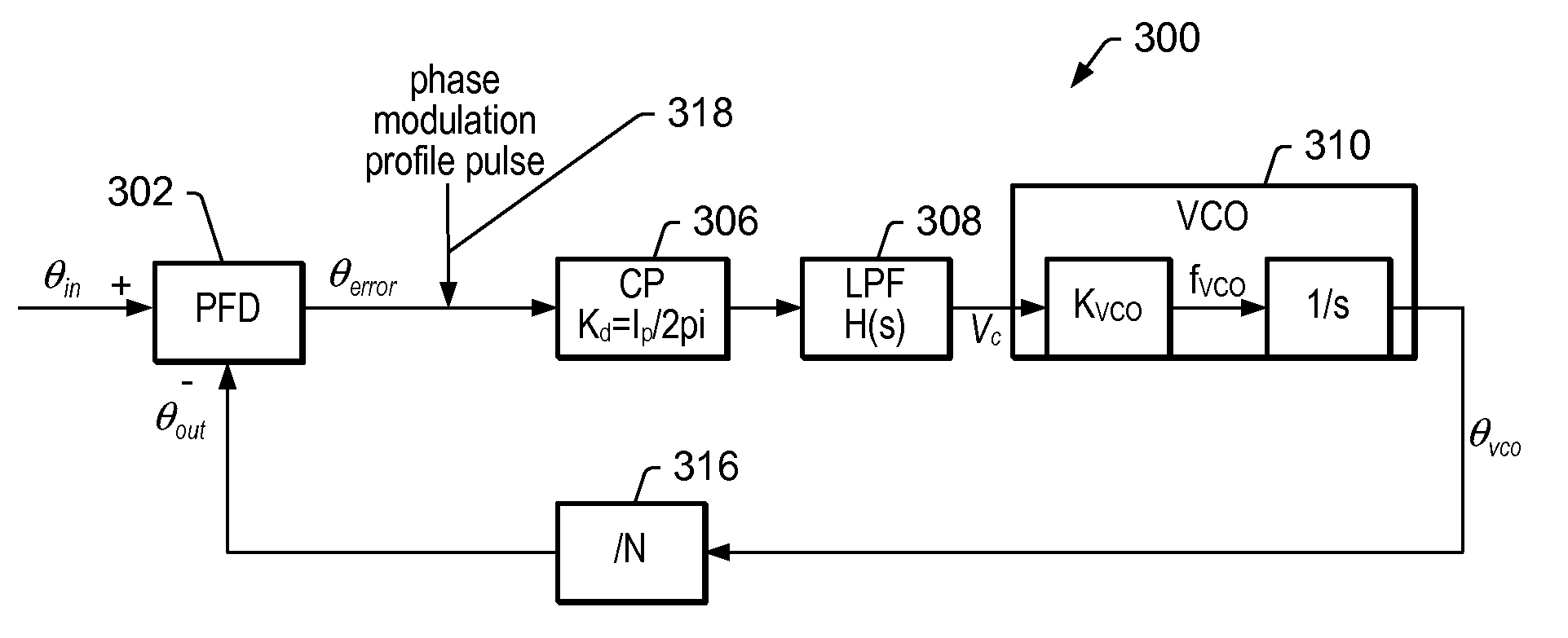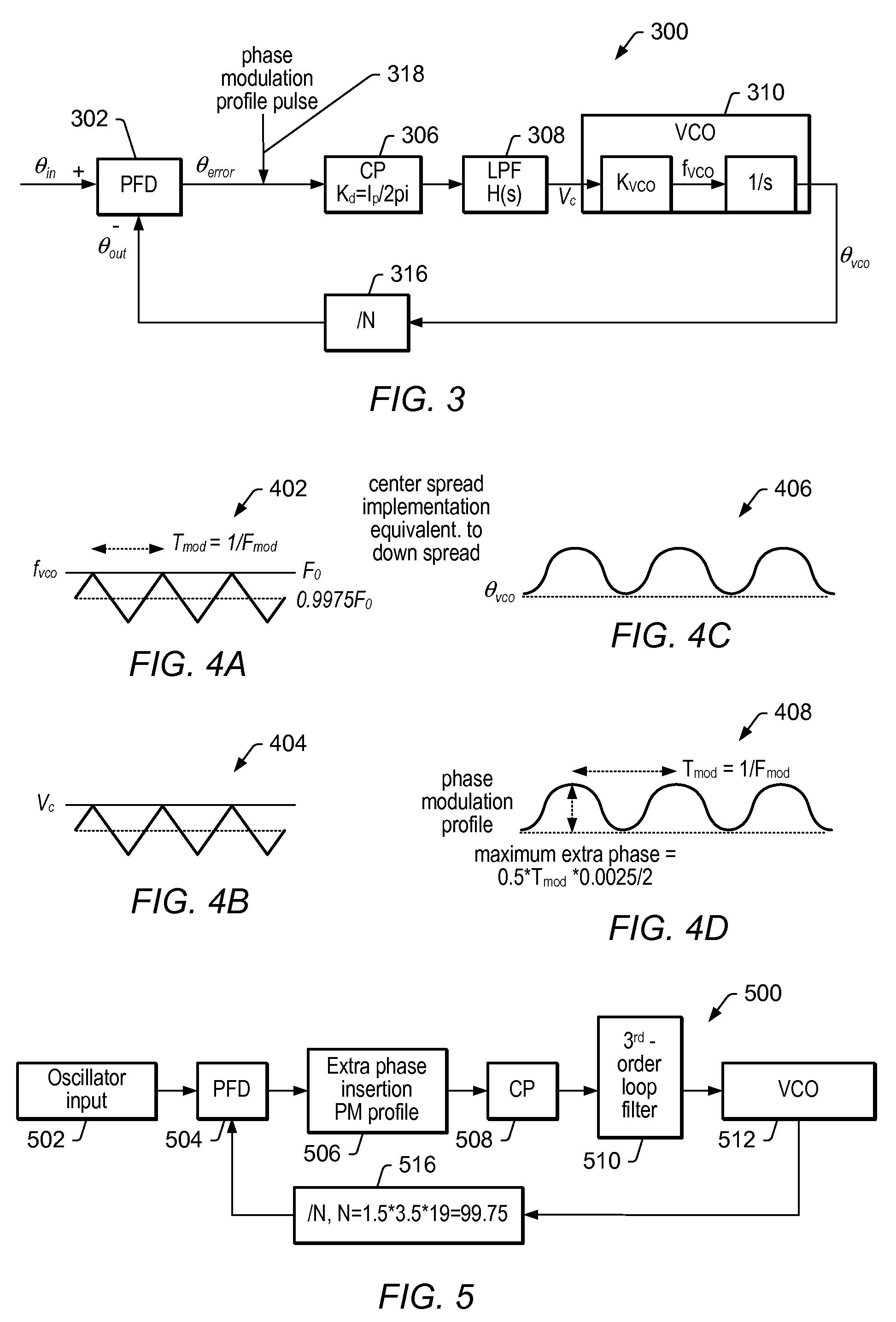Phase modulation method for spread spectrum clock generator
a phase modulation and clock generator technology, applied in the direction of pulse automatic control, pulse technique, transmission, etc., can solve the problems of unavoidably narrow frequency spectrum of clock signals, non-linear profile complicating circuit implementation, and it is typically more difficult to accurately control the linearity of modulation profiles. , to achieve the effect of reducing electromagnetic interference (emi), improving jitter performance, and reducing cos
- Summary
- Abstract
- Description
- Claims
- Application Information
AI Technical Summary
Benefits of technology
Problems solved by technology
Method used
Image
Examples
Embodiment Construction
[0026]There are two major methods or types of methods typically used to implement spread spectrum in a PLL (phase-locked loop) clock generator. One algorithm is based on phase modulation (PM) while the other is based on frequency modulation (FM). Due to the integration / differentiation relationship between frequency and phase—frequency may be integrated to obtain phase, while phase may be differentiated to obtained frequency—the same modulation results in the frequency domain (spectrum) may be mathematically obtained by either directly modulating a PLL's frequency via frequency modulation, or modulating it via phase modulation and keeping the phase related to the frequency through integration. However, also taking into account circuit design and implementation considerations, solutions that employ phase modulation may theoretically be preferred over solutions that employ frequency modulation, due to better jitter performance of the PM method resulting from the direct modulation of th...
PUM
 Login to View More
Login to View More Abstract
Description
Claims
Application Information
 Login to View More
Login to View More - R&D
- Intellectual Property
- Life Sciences
- Materials
- Tech Scout
- Unparalleled Data Quality
- Higher Quality Content
- 60% Fewer Hallucinations
Browse by: Latest US Patents, China's latest patents, Technical Efficacy Thesaurus, Application Domain, Technology Topic, Popular Technical Reports.
© 2025 PatSnap. All rights reserved.Legal|Privacy policy|Modern Slavery Act Transparency Statement|Sitemap|About US| Contact US: help@patsnap.com



